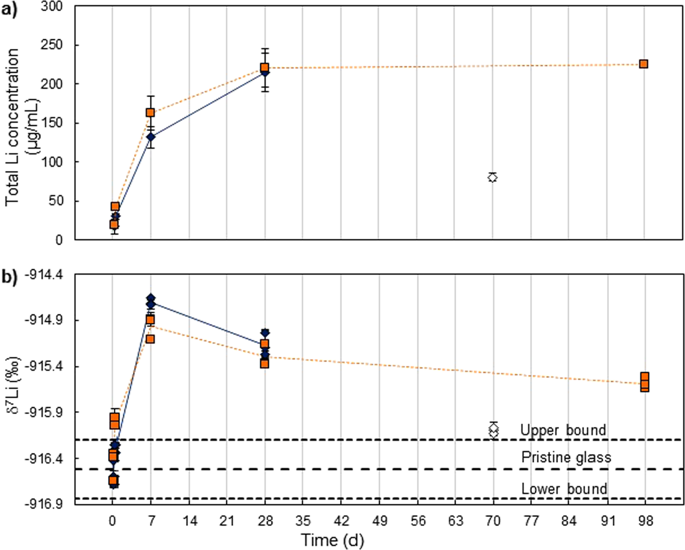npj Materials Degradation ( IF 6.6 ) Pub Date : 2019-11-22 , DOI: 10.1038/s41529-019-0102-5 Thomas L. Goût , Sambuddha Misra , Edward T. Tipper , Madeleine S. Bohlin , Rui Guo , Ian Farnan

|
High level nuclear waste is often immobilised in a borosilicate glass for disposal. However, this glass corrodes in contact with aqueous solutions. To predict radionuclide releases from wasteforms, their dissolution mechanisms must be understood. Understanding glass dissolution mechanisms presents a challenge across numerous other disciplines and many glass dissolution models still remain conflicted. Here we show that diffusion was a significant process during the later stages of dissolution of a simplified waste glass but was not evidenced during the initial stages of dissolution. The absence of measurable isotopic fractionation in solution initially supports models of congruent dissolution. However, the solution becoming isotopically lighter at later times evidences diffusive isotopic fractionation and opposes models that exclude diffusive transport as a significant mechanism. The periodically sampled isotopic methodologies outlined here provide an additional dimension with which to understand glass dissolution mechanisms beyond the usual measurement of solution concentrations and, post-process, nano-scale analysis of the altered glass.
中文翻译:

水性玻璃溶解过程中的扩散过程
通常将高含量核废料固定在硼硅酸盐玻璃中进行处理。但是,这种玻璃在与水溶液接触时会腐蚀。为了预测放射性核素从废物形式中的释放,必须了解其溶解机理。了解玻璃溶解机理对许多其他学科提出了挑战,许多玻璃溶解模型仍然存在矛盾。在这里,我们表明,在简化废玻璃溶解的后期阶段,扩散是一个重要的过程,但在溶解的初始阶段并未得到证实。溶液中不存在可测量的同位素分馏,最初支持全同溶解模型。然而,后来溶液同位素变轻的现象证明了扩散同位素分馏,并反对将扩散运输视为重要机制的模型。此处概述的定期采样同位素方法学提供了一个附加的维度,通过该维度可以了解玻璃溶解机理,而不仅仅是溶液浓度的常规测量以及经过处理的玻璃的纳米级后处理分析。











































 京公网安备 11010802027423号
京公网安备 11010802027423号